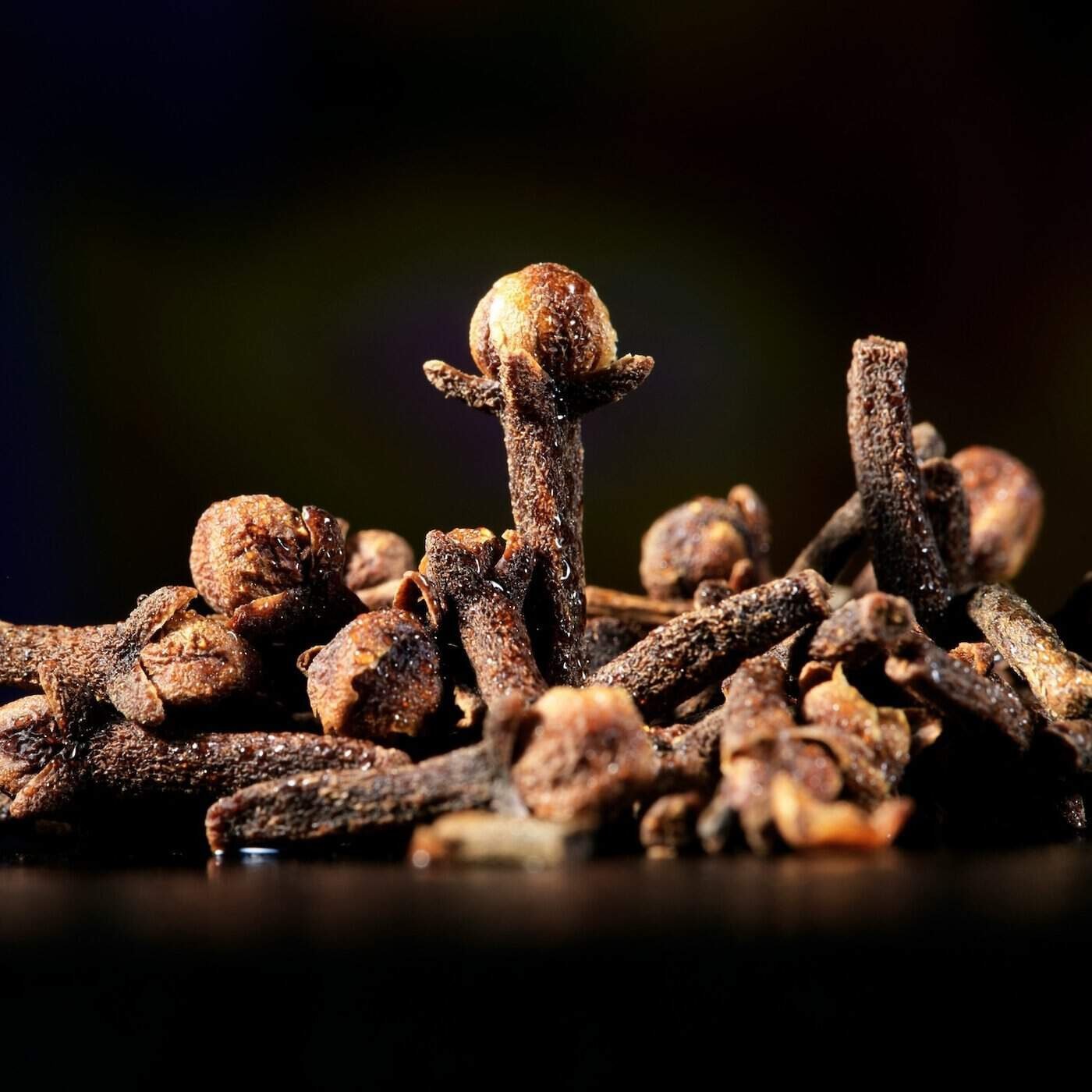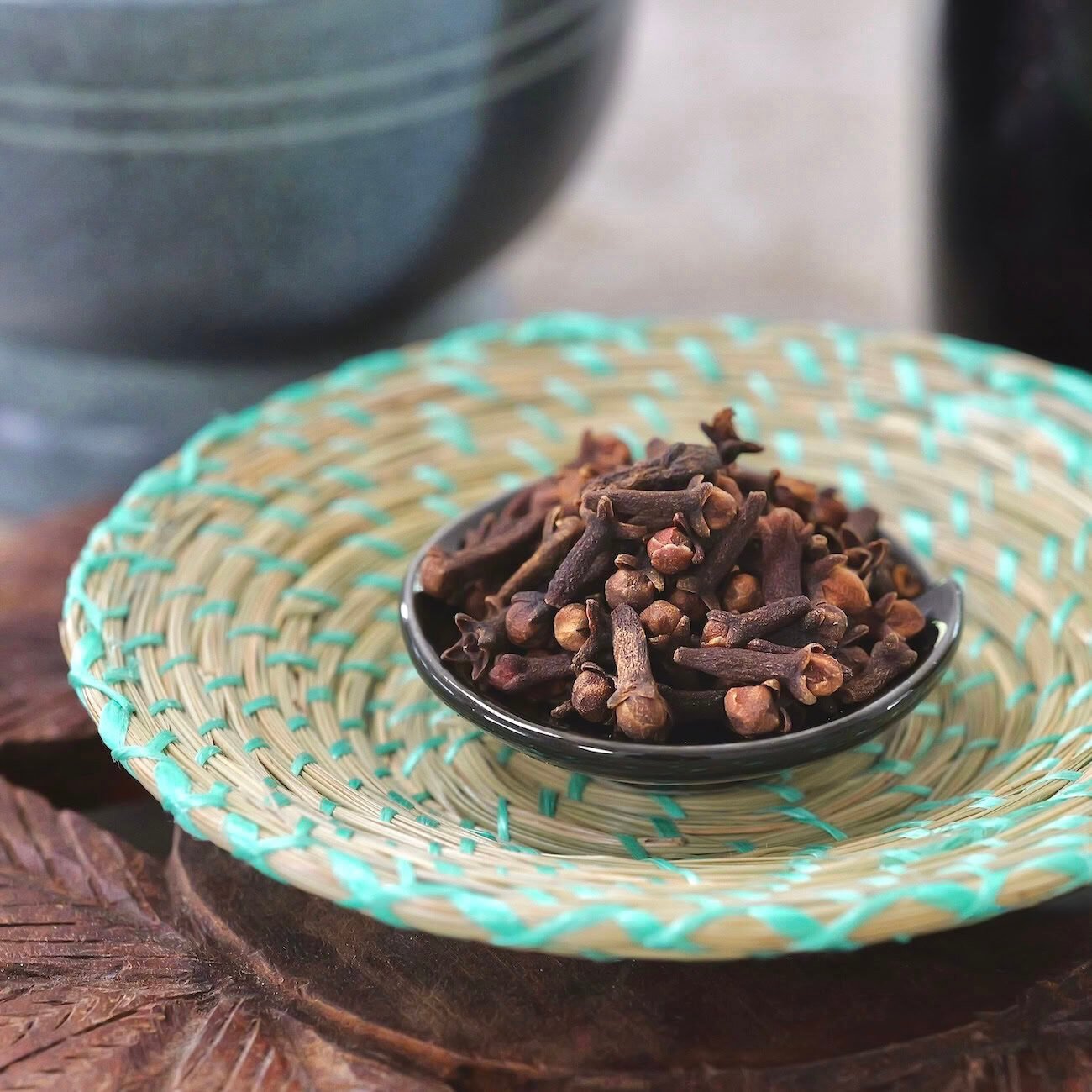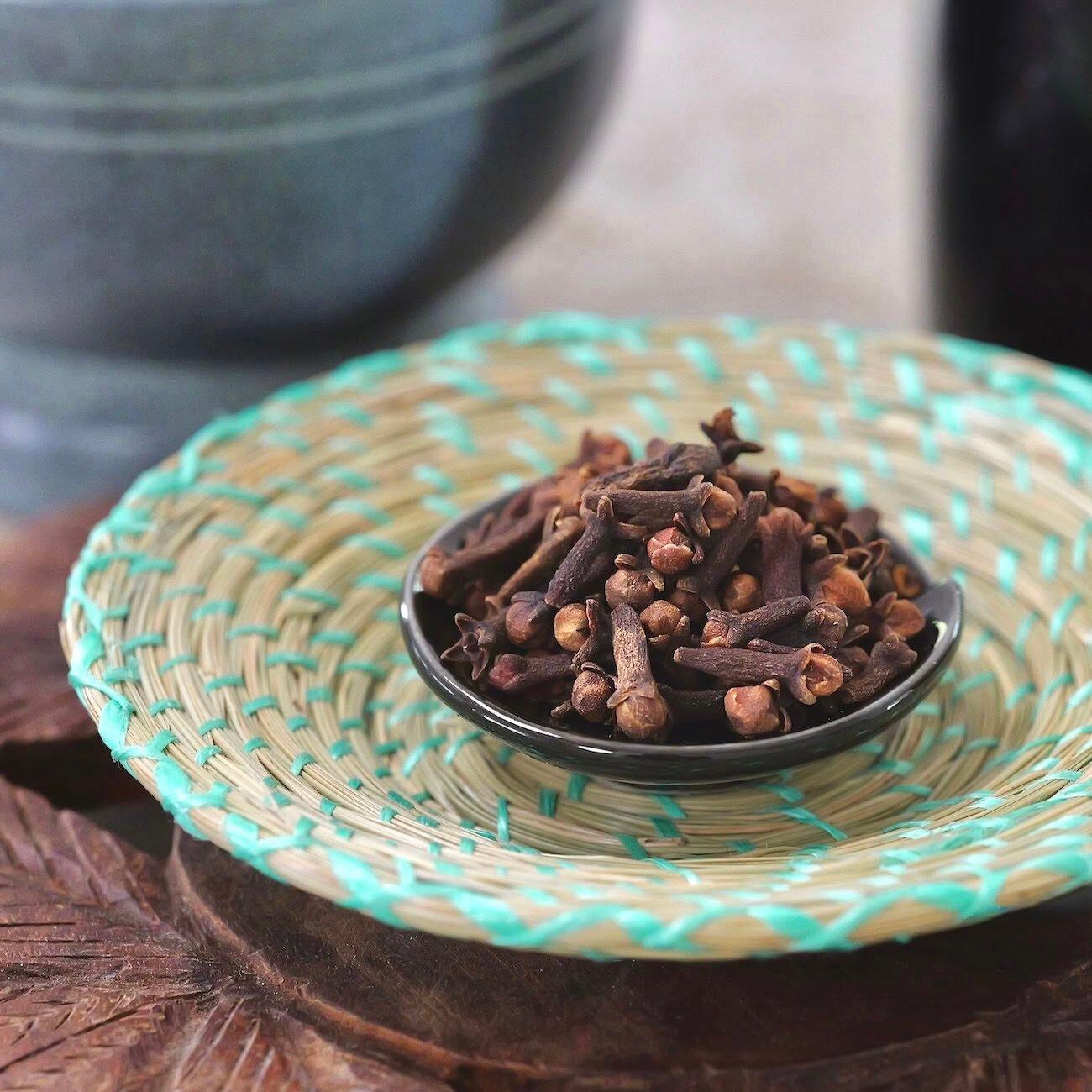Cloves
Cloves are the spice produced from the unopened flower buds of Syzygium aromaticum, a tropical evergreen tree in the myrtle family.

REGION OF ORIGIN
The clove tree is from the northern islands of the Maluku archipelago (also known as the Moluccas) in eastern Indonesia. The Moluccas were historically called the Spice Islands for being the sole source of nutmeg, mace, and cloves for centuries. These islands' tropical climate, rich volcanic soil, and consistent rainfall are ideal for the clove tree.
PART & COLOR
Cloves are unopened flower buds. Once dried and cured, they turn a deep reddish-brown color. Dried clove buds have a characteristic nail-shaped appearance with a round head (the four unopened petals), the four spreading sepals, and the slender calyx tube.
HARVEST
Clove trees are evergreen and can flower year-round, but peak harvests align with the dry seasons—June to July and December to January. The unopened flower buds are usually hand-harvested at just the right moment before they bloom, when they shift from green to pale pink. This signaling peak oil concentration. They are then sun-dried, sorted, and graded by size, color, and potency.

FLAVOR & AROMA PROFILE
Cloves possess a powerful aroma that is instantly recognizable—a unique, warming blend of sweet, spicy, and woody notes. The primary aromatic compound, eugenol, lends cloves their distinctive, almost medicinal fragrance, reminiscent of pepper, cinnamon, and eucalyptus with an earthy, resinous depth. On the palate, cloves deliver a potent punch of flavor with an assertive yet harmonious heat. The initial taste is pungent and warm, followed by a sweetness with hints of spice and a subtle numbing sensation. Eugenol acts on the tongue as well, leaving a lingering cooling effect similar to menthol in mint or cineole in bay leaves and cardamom. Lovers of clove will tell you, this complex combination is certainly well-balanced.
Cloves add an exhilarating flair to otherwise plain dishes. The intensity of their flavor varies depending on their form and preparation. Whole cloves offer a more subtle and prolonged flavor, ideal for infusing. Freshly ground cloves, on the other hand, release their full potency immediately—a literal burst of floral warmth. The unique, nearly mystical power of cloves can only be experienced. Reading about it doesn't do it justice.
CULINARY USES
Cloves' multifaceted flavor is compatible with so many other spices: cinnamon, nutmeg, allspice, cardamom, ginger, cumin, star anise... the list goes on. Because of this, cloves are an essential component to many famous spice blends around the world: the ubiquitous garam masala from India, the iconic Chinese five-spice powder, the beloved Middle Eastern baharat, and the lovely Ras el Hanout from North Africa. It's fun to try all these complimentary spices in varying proportions to create novel spins on classic dishes, especially baked goods like apple pie and gingerbread.
Cloves themselves are often used to flavor meats, such as ham, beef, and game, and are a key ingredient in various traditional European dishes like German sauerbraten and French pot-au-feu. Whole buds can infuse syrups and vinegars, allowing you to create unique condiments and flavoring agents. For example, clove-infused vinegar can be used to pickle vegetables or add a tangy vibe to salad dressings. Incorporating this unique spice into your repertoire will open new realms of culinary possibility, helping you make some real magic in the kitchen.



